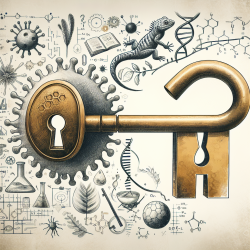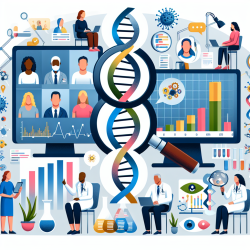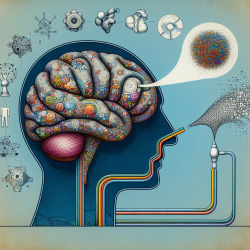Introduction
In the realm of STEM education, finding innovative methods to engage students and enhance their learning experience is paramount. One such method that has shown promising results is bioinspiration, as highlighted in the research article "Bioinspiration as a method of problem-based STEM education: A case study with a class structured around the COVID-19 crisis" by Snell-Rood et al. (2021). This approach not only integrates real-world problems into the curriculum but also fosters interdisciplinary learning, making it an invaluable tool for educators.
Understanding Bioinspiration in STEM Education
Bioinspiration involves drawing inspiration from nature to solve complex problems. In the context of STEM education, it allows educators to use biological systems as a framework for teaching various concepts. The study by Snell-Rood et al. (2021) illustrates how bioinspiration can be effectively used in a classroom setting by focusing on the COVID-19 crisis. Students were encouraged to explore biological systems that could provide solutions to pandemic-related challenges, such as mask design and filtration systems.
Implementing Bioinspiration in Your Classroom
To implement bioinspiration in your classroom, consider the following steps:
- Identify a Real-World Problem: Choose a current issue that resonates with students. This could be related to health, environmental challenges, or technological advancements.
- Encourage Mind Mapping: Have students create mind maps to break down the problem into subproblems. This helps in structuring the learning content and identifying relevant biological systems.
- Explore Biological Systems: Guide students to research biological systems that have evolved solutions to similar problems. This could involve studying plant adaptations, animal behaviors, or microbial processes.
- Facilitate Interdisciplinary Learning: Integrate concepts from ecology, evolution, behavior, and physiology into the curriculum. Encourage students to collaborate on projects that require knowledge from multiple disciplines.
- Promote Creativity and Innovation: Challenge students to design solutions inspired by nature. This could involve creating prototypes, conducting experiments, or developing models.
Benefits of Bioinspiration in STEM Education
The bioinspired approach offers several benefits for both educators and students:
- Enhanced Engagement: By connecting classroom learning to real-world problems, students become more invested in their education.
- Interdisciplinary Learning: Students gain a broader understanding of how different scientific disciplines intersect and contribute to solving complex problems.
- Critical Thinking and Problem-Solving: Bioinspiration encourages students to think critically and develop innovative solutions, skills that are crucial in today's rapidly changing world.
- Creativity and Innovation: By drawing inspiration from nature, students learn to approach problems creatively and think outside the box.
Encouraging Further Research
While the study by Snell-Rood et al. (2021) provides a solid foundation for implementing bioinspiration in STEM education, there is still much to explore. Educators are encouraged to conduct further research on how bioinspiration can be tailored to different educational contexts and student needs. Additionally, exploring partnerships with biological scientists and engineers can enhance the learning experience and provide students with real-world insights.
To read the original research paper, please follow this link: Bioinspiration as a method of problem-based STEM education: A case study with a class structured around the COVID-19 crisis.










